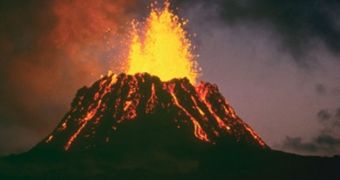After so many years of wondering about this geologically-remarkable chain of Pacific Ocean islands, experts now finally managed to get a clearer picture of what's hiding underneath Earth's crust there.
Usually, volcanic archipelagos such as this one – featuring both active and inactive volcanoes – can be found around subduction zones. These are areas where tectonic plates come together and collide with one another.
The result of this process is that one of the plates is inserted into our planet's mantle and destroyed, while its material gets recycled. The other plate moves on top, and continues onwards.
These interactions create creases in Earth's crust, that can form new land above the water. But this is not what's happening in Hawaii. The island chain isn't located anywhere near the edges of the Pacific tectonic plate.
Working together, researchers at the Purdue University and the Massachusetts Institute of Technology (MIT) managed to clear up this mystery. Results of their work appear in this week's issue of the top journal Science.
The new view of the area underneath Hawaii extends for hundreds of kilometers downwards, explains MIT expert Robert van der Hilst, the leader of the research. He and his team used a variant of an established imaging technique to carry out the work.
In an area located far west of the Big Island of Hawaii, experts found an increased level of activity in the planetary mantle. This region is about 2,000 kilometers wide, and is located at a depth of more than 600 kilometers, the joint team reports.
“The implication [of this new work] is that there is no simple, deep plume directly beneath Hawaii. So the textbooks on Hawaii will have to be rewritten,” Van der Hilst argues in the new paper.
The expert holds an appointment as the MIT Cecil and Ida Green Professor of Earth and Planetary Sciences and is also the director of the Earth Resources Laboratory at the Institute.
“The observation is intriguing because it does not fit nicely within the current plume model. So I think the paper will force us to rethink […] mantle plumes and convection,” adds expert Yang Shen.
The University of Rhode Island professor of seismology and marine geophysics, says that the resolution this new view of the Hawaiian underground has is a lot higher than any other obtained previously.
“I think this could be the technique of the future. The receiver networks are exploding, and in the next five to 10 years we can probably do even more spectacular things,” van der Hilst concludes.

 14 DAY TRIAL //
14 DAY TRIAL //